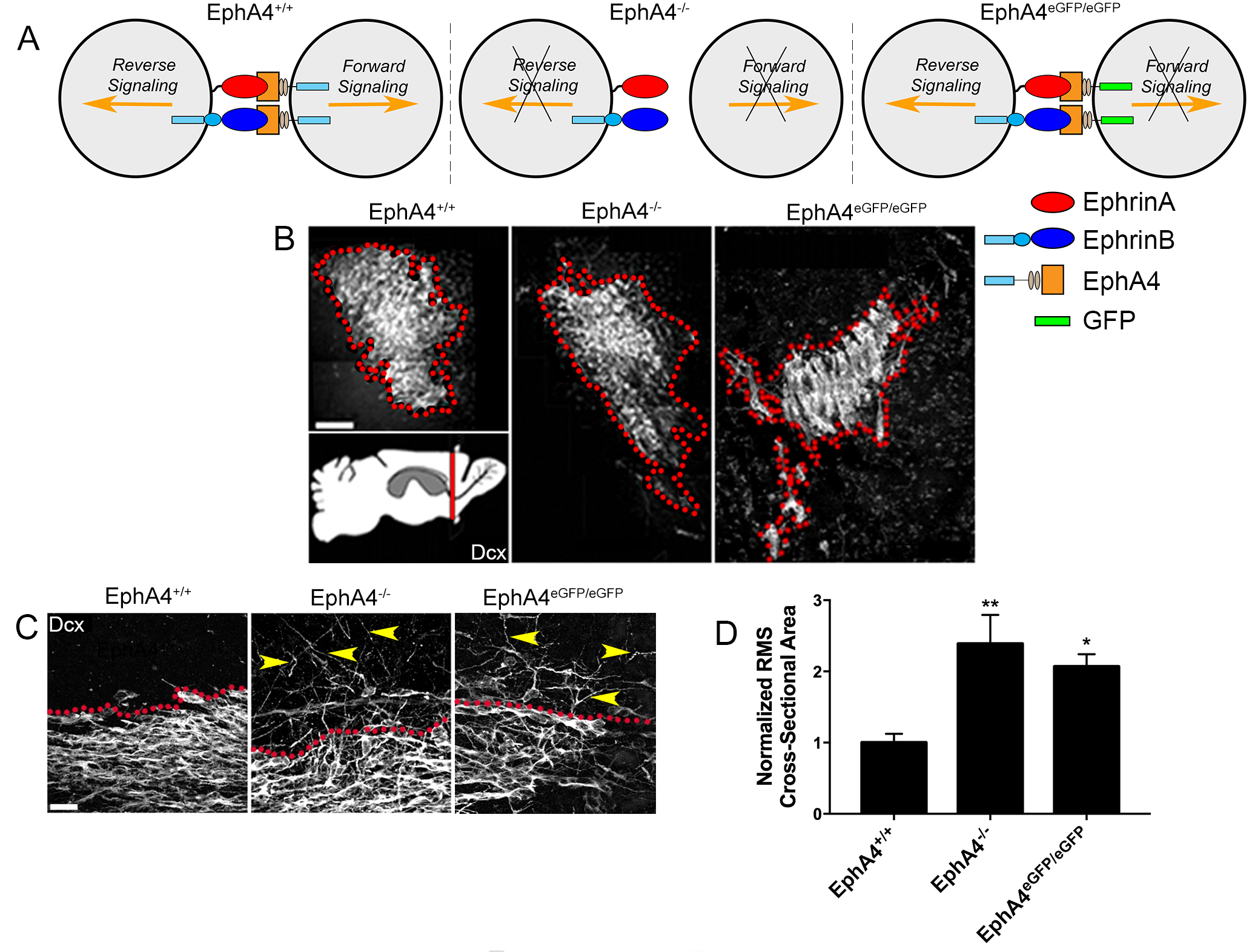The rostral migratory stream (RMS) is a unique pathway responsible for transporting new neurons from the ventricular zone-subventricular zone (VZ-SVZ) stem cell niche through the anterior forebrain to the olfactory bulb (OB).
- In rodents, the RMS supplies new neurons to the OB throughout life.
- In human neonatal development, VZ-SVZ neurogenesis supports RMS-OB migration and another forebrain pathway the medial migratory stream (MMS) that supplies new neurons to the ventromedial prefrontal cortex.
- The organization of the RMS, which has been well characterized, consists of tightly arrayed chains of migratory neuroblasts within a dense meshwork of astrocytes, presenting a unique organization that supports controlled, large-scale and long-range neuroblast migration.

We found that the Eph receptor, EphA4, is essential for initially establishing and then maintaining RMS cytoarchitecture, as well as mediating efficient neuroblast transit to the OB.
- Eph-ephrin signaling is a common mechanism used in development to coordinate axon guidance, cell migration, boundary discrimination and cell segregation through adhesive and repulsive cell contact-mediated signaling interactions.
- We are currently investigating the role of Eph-ephrin signaling networks in regulating migration and determining the destination of newly generated neurons in the developing and adult brain.

